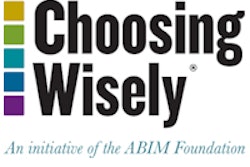
Healthcare regulators looking to reduce overutilization of medical imaging through public reporting of unnecessary procedures may want to find a bigger stick. An analysis in Texas of public reporting of MRI scans for low back pain -- an often unnecessary procedure -- found the initiative to have little effect on procedure growth.
The study from the University of Texas found no significant changes in the utilization of MRI for low back pain among Medicare beneficiaries and members of Blue Cross/Blue Shield of Texas (BCBSTX) from 2008 to 2011. In fact, the number of MRI scans increased (Radiology, March 9, 2015).
The results raise questions about the public reporting requirement, which the U.S. Centers for Medicare and Medicaid Services (CMS) had hoped would act as a brake on utilization by publicly exposing sites that perform a large volume of unnecessary procedures. One reason for the lack of change in the study might be that CMS has the wrong target, the researchers speculated.
CMS is "not asking the physician who is prescribing the MRI to report their rates, but is asking the radiologists in the hospitals to report their rates," lead author Dr. Cecilia Ganduglia, an assistant professor of management policy and community health, told AuntMinnie.com. "We don't believe that is the appropriate person who should be the target, at least in this case."
Quality matters?
CMS adopted its Hospital Outpatient Quality Reporting (OQR) program in 2008 to address concerns regarding the escalating use of imaging and the subsequent rise in costs for third-party payors and patients. To qualify for the full annual update on their Medicare payment rate, hospitals and imaging facilities are required to report publicly, among other disclosures, the rate of MRI scans for low back pain without a prior history of conservative treatment management.
"The specific purpose of CMS requiring hospitals to report this measure is that they are trying to increase transparency and inform the public about quality of care," Ganduglia said. "They are also linking these measures to some payments. CMS only requires that hospitals report the measure; there is no penalty on the value of the report."
In their review, Ganduglia and colleagues found that more than 90% of both Medicare and BCBSTX MRI exams for low back pain were performed in outpatient hospital departments, physician offices, independent clinics, and laboratory or diagnostic testing facilities.
To help assess changes in MRI utilization, the study used the Medicare OQR program's OP-8 reporting measure, which is calculated by dividing the number of lumbar spine MRI scans performed without a prior history of conservative therapy for low back pain by all lumbar spine MR imaging examinations for low back pain.
Questionable value
Approximately one-quarter of Medicare beneficiaries had at least one claim for low back pain diagnosis; the total was 482,316 individuals in 2008 and 550,267 in 2011. For the BCBSTX members, approximately 5% had claims of low back pain diagnoses, with 163,107 in 2008 and 199,124 in 2011.
"We selected MRI for low back pain because this is a type of test that has often been cited as having uncertain value when it is done too early or without a history of conservative management," Ganduglia said.
After excluding appropriate MRI exams and scans that did not comply with inclusion criteria, the researchers reviewed data from 264,262 Medicare MRI claims and 66,201 BCBSTX MRI claims from 22 Texas hospital referral regions.
During the four-year period in which quality reporting was in place, the total number of MRI exams with a low back pain diagnosis did not drop, but instead rose, according to Ganduglia and colleagues. In the BCBSTX group, the number of exams increased 34%, from 21,563 in 2008 to 28,867 in 2011. For the Medicare patients, the number rose 10%, from 72,167 in 2008 to 80,354 in 2011.
"The lack of a significant reduction in the use of MR imaging for low back pain without history of conservative therapy suggests that simply requiring hospitals to report such rates is not sufficient to reduce imaging practices," they wrote.
Interestingly, hospitals with the highest Medicare volumes and OP-8 rates in 2008 also experienced the greatest decrease in their MRI utilization rate from 2008 to 2011, with a 3% decrease occurring in 2009, the first year of the OQR program. The annual change rate declined for all three years compared to 2008 (p < 0.0001).
Conversely, hospitals with the lowest OP-8 rates saw their OP-8 numbers increase 6% over the study period (p = 0.006 for 2009, p = 0.037 for 2010, and p = 0.004 for 2011).
"It can be argued whether a 3% reduction or a 6% increase, while statistically significant, should be considered clinically important," the authors wrote. "However, this may mean that the MRI exams are still occurring but have been shifted to other hospitals. ... More research is needed at the provider level to investigate why prescribing patterns changed."
'Not surprised'
"In truth, we were not surprised with the results for the specific measure," Ganduglia said. "As CMS is requiring hospitals to report their MRI utilization for low back pain, they are really targeting the person that provides or does the imaging study, and not really the people indicating or prescribing the imaging study, which is really where you could have an effect and modify behavior."
Ganduglia emphasized that she and her colleagues do not object to public reporting of the utilization of MRI or any other modality. "We actually think it is good," she said. "But I do think we need to evaluate the types of measures we are requiring of people and whether they are effective or not, whether we are measuring the correct thing, and who is targeted. We need to know the worth of reporting in itself and whether it is having a good effect."
The authors also took note of utilization awareness campaigns, such as Choosing Wisely, which might have a "different and more relevant effect on physician behavior, which has yet to be measured."


.fFmgij6Hin.png?auto=compress%2Cformat&fit=crop&h=100&q=70&w=100)





.fFmgij6Hin.png?auto=compress%2Cformat&fit=crop&h=167&q=70&w=250)











